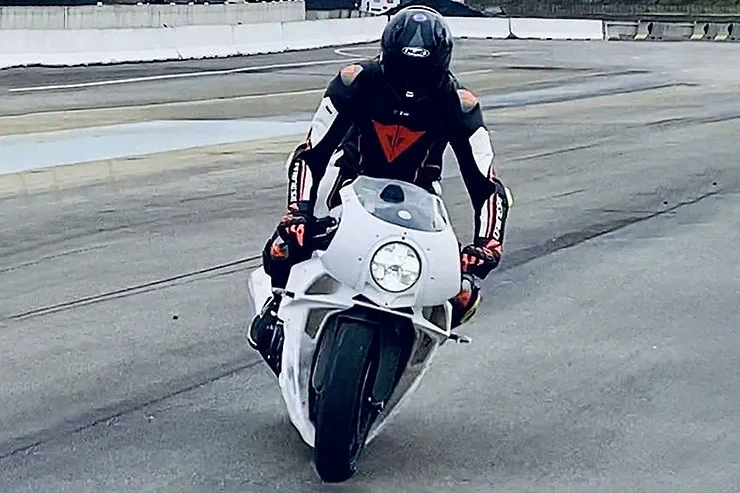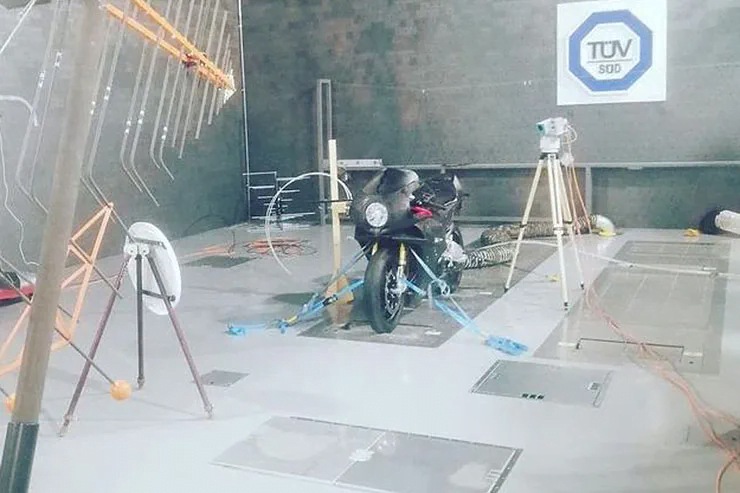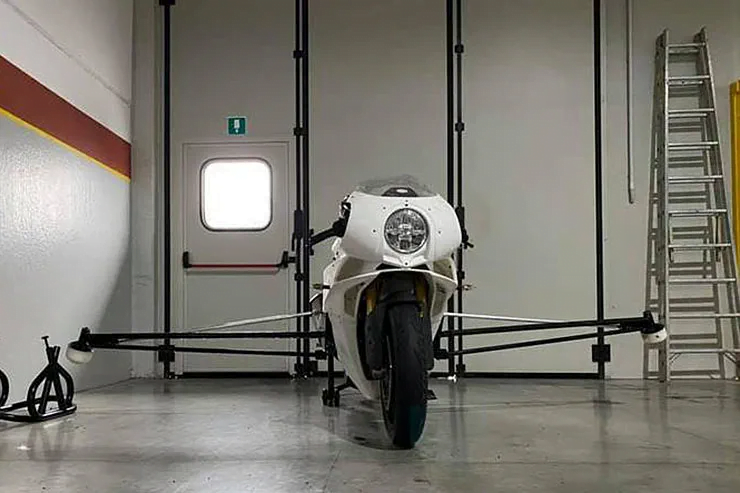The new Bimota, the KB4, has been announced for a while and numerous stolen photos of the Italian machine allow us to know a lot about the physics of the machine, and now, detailed specifications of the machine have been shared ahead of the official unveiling which is expected to take place at the end of the year. Some details aren't surprising, but others suggest this could turn out to be a much more impressive machine than looking at power figures alone.
Since its founding by Massimo Tamburini (the "Ta" of Bimota), associated with Valerio Bianchi (Bi) and Giuseppe Mori (Mo) in 1973, Bimota's modus operandi has been to take impressive engines produced in series but used in disappointing frames, and to insert them into lighter and more manageable frames. The initial focus was on Japanese four-cylinders, which by the 1970s combined unprecedented performance and reliability at an affordable price, but tended to be encumbered with heavy, unsophisticated chassis designs.
After a two-year hiatus, Kawasaki rescued Bimota when it acquired a stake in the Italian brand in 2019. With the KB4, Bimota returns to this proven formula, taking the Kawasaki Ninja 1000 and transforming it from a big sport-tourer into a sharp Superbike.

The technical details we uncovered show that in creating the KB4, Bimota added its own tubular steel and carbon fiber chassis to replace the original aluminum design, but did nothing to evolve the engine, in Taking advantage of the Kawasaki Ninja 1043SX's 16 cc liquid-cooled, 1000-valve inline-four, the upcoming neo-retro will produce 140 horsepower at 10 rpm and 000 Nm of torque at 111 rpm. The only parts specific to Bimota are the silencers, a 8-in-000 collector coming out on the right side of the beast.
However, on the handlebars, the KB4 promises to be completely different from the original Kawasaki, starting with a drastic reduction of 41 kg: the KB4 weighs 194 kg fully loaded, compared to 235 kg for the Ninja 1000 measured in the same terms.
The weight loss isn't the only big change, as the Bimota is also physically smaller than the Kawasaki. The length increases from 2 mm to 100 mm, the width from 2 mm to 050 mm, but the biggest change comes in the wheelbase, which goes from 825 mm to just 774 mm.

What's intriguing is how Bimota achieved a shorter wheelbase, as it was done in an unconventional way. While the firm could simply use a shorter swingarm, this would tend to push the weight distribution rearward, which would be undesirable from a handling standpoint. Instead, the company appears to be moving the front wheel rearward, closer to the engine. A seemingly simple idea, but such a move would cause the front wheel to hit the radiator while the suspension compresses, unless Bimota moves the radiator. And that's exactly what the brand's engineers did.
Combined with the large air intakes on either side of the fairing and what appear to be carbon fiber ducts running all the way to the rear of the bike, the radiator has been moved from its conventional location between the engine and wheel front to a position under the saddle, like on a Benelli Tornado. This means the engine can be moved closer to the front wheel, allowing for more forward-biased weight distribution, and the bike can retain a long swingarm while reducing the wheelbase and increasing the steering angle.

Given that the KB4 has obtained the necessary approvals for its sale in Europe, its official launch is likely to be very close – EICMA in Milan taking place in early November seems to be the right place.



